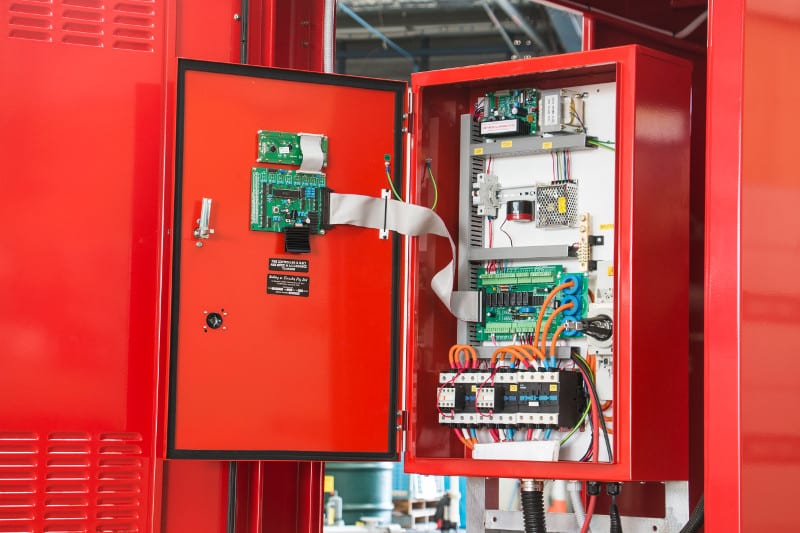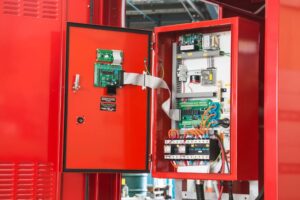
What is a fire pump controller?
May 25, 2022 In simple terms, a fire pump controller is a device to reliably start and stop a fire pump, as well as monitor conditions in an ongoing manner that could hinder or prevent the proper operation of a fire pump. They act the same way any motor controller operates, except they are built with more strict standards to ensure that the priority is protecting a property and its occupants over the fire pump motor (or engine) itself.
In simple terms, a fire pump controller is a device to reliably start and stop a fire pump, as well as monitor conditions in an ongoing manner that could hinder or prevent the proper operation of a fire pump. They act the same way any motor controller operates, except they are built with more strict standards to ensure that the priority is protecting a property and its occupants over the fire pump motor (or engine) itself.
UL and FM both “list” or “approve” fire pump controllers. This listing ensures that all fire pump controllers, regardless of manufacturer, all contain specific elements and design to ensure reliable operation in the event of a fire. The minimum required components of fire pump controllers are governed by NFPA 20 and will be discussed in detail in later articles.
For safety reasons, it is very important for qualified and trained professionals to operate and service these controllers, or any controllers using medium or high voltage. So please contact a service professional before any service work is performed!
Fire pump controllers are built mostly to operate either electric motor-driven fire pumps or diesel engine-driven fire pumps. How they are built and accomplish the starting, stopping, and monitoring of each specific pump type varies.
Fire pump controllers can be manually used to start fire pumps, either through use of a button switch, or lever on the controller. But most commonly, fire pump controllers are set up to operate automatically, either by a drop in system pressure in a sprinkler system, or via a signal from a remote device, such as a flow switch or deluge valve. Each controller also can be set up to run continuously until manually shut off, or a timer can be used to automatically stop the fire pump after a set amount of time has transpired (assuming the pressure in the system has stabilized).
The pressure switch device within the fire pump controller has evolved over the years. Not too long ago, bourdon type pressure switches with mercury were used to detect pressure drops and initiate a signal to start and stop the fire pump controllers. Today, the same objective is accomplished with electronic pressure transducers, which allow for real-time electronic communication with modern computer screen interfaces, or “operator interfaces.” But the principle is the same—the owner of the controller sets an “ON” setting and “OFF” set- ting of when they want the fire pump to turn on and when they want it to turn off. A pressure in system pressure is the most reliable sign that a sprinkler head in the building has activated, and the fire pump is built to turn on once this happens automatically.
Once started, a fire pump controller can be set to automatically reset, or (more commonly) require a manual stop, whereby someone has to manually push a button on the controller to stop it.
Important features and components, mandatory alarms, starting method type, common options, etc., will all be discussed in coming articles, so stay tuned!